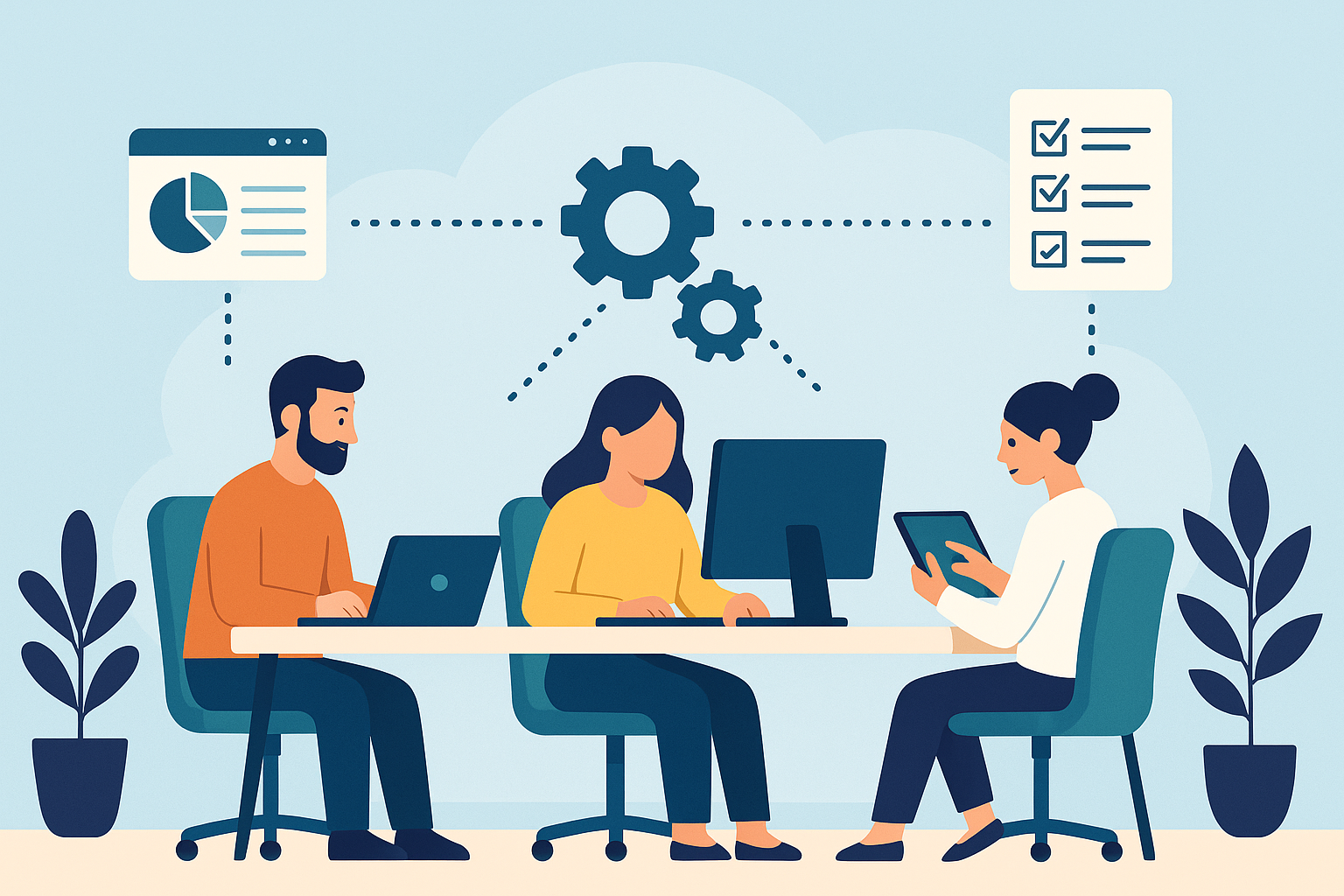Introduction
The development of technology has dramatically transformed our professional lives. Now, more than ever, we find ourselves becoming digital nomads. The transition from traditional office spaces to electronic workspaces offers us great flexibility and the opportunity to operate from anywhere in the world. However, with this freedom, it gives us the temptation to relax or even procrastinate at any moment of our working day. So, how can we ensure our productivity remains high while we’re working remotely?
Peculiarities of Digital Workspaces
Though working online still presupposes you need to complete a variety of tasks, it is different from office work in many terms. In particular, digital workspaces:
● Allow you to work in your most comfortable and efficient settings. Also, you can adapt the schedule to suit your most productive hours and save time on commuting, which definitely boosts your productivity.
● Facilitate your seamless, real-time interaction with the team. Tools for video conferencing, instant messaging, and collaborative document editing can enhance efficiency by making remote teamwork and communication easier and faster.
● Centralize resources, making access to documents, files, and applications quick and straightforward.
● Allow you to automate repetitive tasks, such as scheduling, managing emails, or organizing tasks.
● Require a high-speed internet connection that is not always available. Poor connectivity can disrupt your workflow, cause frustration, and decrease productivity.
● Presuppose excessive use of digital tools and frequent transitions between devices and applications that can sometimes be stressful.
● Do not promote discipline and allow you to be disrupted by many things that are not related to your work.
Tips To Boost Your Productivity in the Digital Workplace
Effective use of technology, time management, and communication make the foundation of your professional efficiency. Though it seems challenging, with the right approach and tools, you can boost your productivity significantly. We have gathered ten practical tips you can apply:
1. Plan your day
Use digital calendars like Google Calendar to block out time for tasks, meetings, breaks, and even personal activities. If you know what’s next, it’ll be easier for you to maintain focus throughout the working shift.
2. Prioritize tasks
Use the Eisenhower Box technique to focus on what genuinely matters. You should prioritize your tasks into four categories — urgent and important, important but not urgent, urgent but not important, and not urgent or important — and dedicate your attention to the tasks that truly matter and need your immediate action.
3. Use task management tools
Apps like Asana and Trello can help you track and manage tasks, assign deadlines, and collaborate with your team. You may receive notifications and reminders when something urgent arises and see the priority of each task among others.
4. Embrace automation and technology
Automate repetitive tasks. It will save you valuable time and allow you to focus on more complex tasks. Besides, various apps and websites may help you complete the majority of your tasks quickly and efficiently. For instance, if you need a legal consultation, instead of asking all your friends and acquaintances for a contact of a good attorney, just google lawyers near me. Choose a reliable legal directory, like Lawrina, that would offer you a wide choice of professionals within minutes.
5. Limit distractions
If you work from home, find a place where you are alone and have a certain working space where there are not things that are not related to your work. Even if it is just a corner in a room where your working table stands, make sure you don’t have anything that can interrupt your attention: books, devices, or toys. Use special software that blocks the websites and apps you do not need for work.
6. Limit distractions
If you work from home, find a place where you are alone and have a certain working space where there are not things that are not related to your work. Even if it is just a corner in a room where your working table stands, make sure you don’t have anything that can interrupt your attention: books, devices, or toys. Use special software that blocks the websites and apps you do not need for work.
7. Optimize your workspace
Keep your digital workspace clutter-free. Organize documents, files, and emails and keep your desktop clean, just as you would do to a physical desk.
8. Communicate effectively
Use collaboration tools like Slack for real-time interaction and sharing of ideas. Sometimes, a 5-minute call can be more effective than a dozen emails.
9. Keep learning
Online webinars, courses, and other digital resources will help you stay updated in your field. Besides, you can discover new tools that can help you increase your productivity.
10. Maintain work-life balance
Flexibility is great, but it’s vital to establish boundaries between work and personal life. Structure your day so that you have clearly defined work hours, and make sure you disconnect when your workday ends. This will prevent you from burnout and sustain productivity in the long run.
Conclusion
The digital workplace is here to stay, and mastering your productivity in this environment is your main path to the notorious work-life balance. Maintain a consistent work schedule, use the right productivity tools, and prioritize tasks correctly to avoid burnout and dedicate your time to all essential tasks without stress.
Published: July 28, 2024





